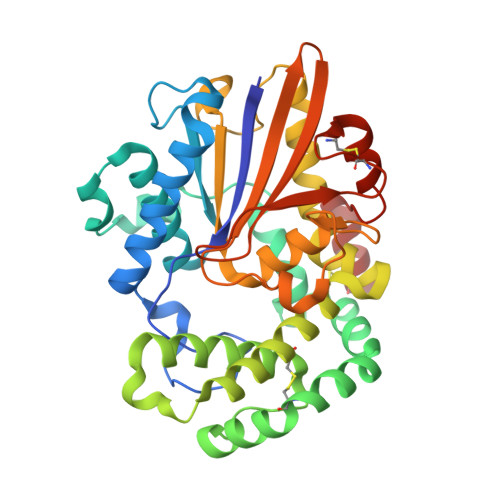Acid phosphatase-like proteins, a biogenic amine and leukotriene-binding salivary protein family from the flea Xenopsylla cheopis.
Lu, S., Andersen, J.F., Bosio, C.F., Hinnebusch, B.J., Ribeiro, J.M.(2023) Commun Biol 6: 1280-1280
- PubMed: 38110569
- DOI: https://doi.org/10.1038/s42003-023-05679-0
- Primary Citation of Related Structures:
8GDL - PubMed Abstract:
The salivary glands of hematophagous arthropods contain pharmacologically active molecules that interfere with host hemostasis and immune responses, favoring blood acquisition and pathogen transmission. Exploration of the salivary gland composition of the rat flea, Xenopsylla cheopis, revealed several abundant acid phosphatase-like proteins whose sequences lacked one or two of their presumed catalytic residues. In this study, we undertook a comprehensive characterization of the tree most abundant X. cheopis salivary acid phosphatase-like proteins. Our findings indicate that the three recombinant proteins lacked the anticipated catalytic activity and instead, displayed the ability to bind different biogenic amines and leukotrienes with high affinity. Moreover, X-ray crystallography data from the XcAP-1 complexed with serotonin revealed insights into their binding mechanisms.
Organizational Affiliation:
Laboratory of Malaria and Vector Research, National Institute of Allergy and Infectious Diseases, Bethesda, MD, USA. Stephen.lu@nih.gov.

















